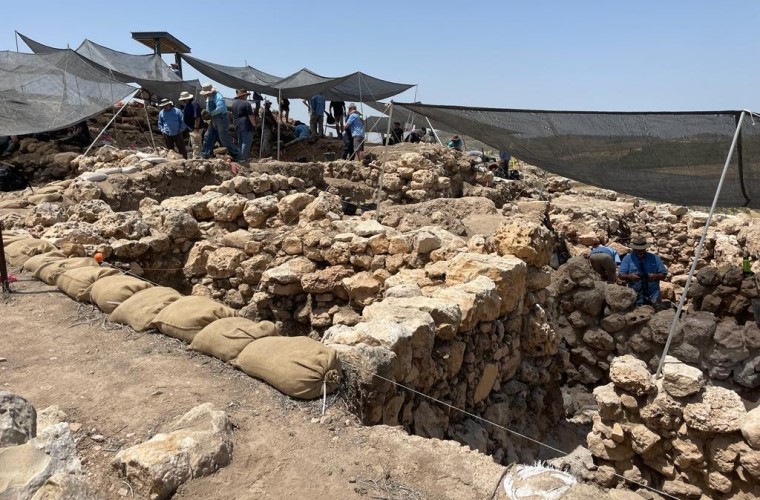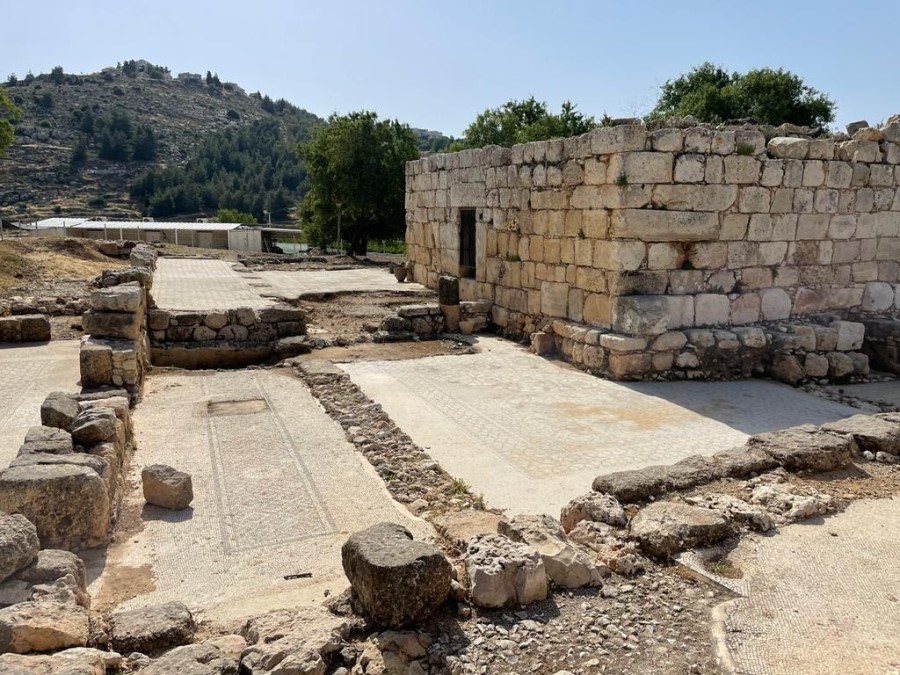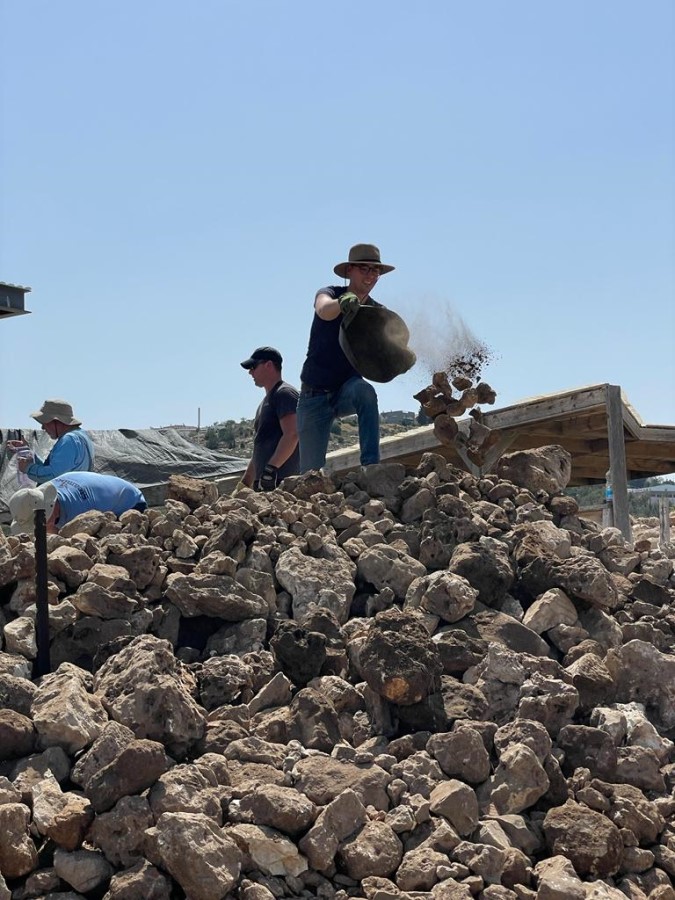Shalom!
Today was a special day in our study trip; we got to take part in a real archaeological dig! It was another warm day, so we tried to finish the majority of our activity in the morning. Here are a few highlights.
In the morning, we drove northeast into the West Bank to visit Tel Shiloh. Originally a Canaanite settlement, Shiloh became important for Israel after the conquest as the residing place of God’s tabernacle (Josh 19:51; Judges 18:31). Hannah journeyed to Shiloh to pray for a son (1 Sam 1:9-11), Samuel served under Eli at Shiloh (1 Sam 3:1), and Eli’s sons committed their crimes at Shiloh (1 Sam 2:12-17, 22-25). The end of Shiloh’s importance came after Israel’s defeat against the Philistines in which the ark of God was captured (1 Sam 4:1-22); though not recorded in the books of Samuel, the Philistines came and devastated Shiloh after the battle (cf. Jer 7:12-15). Archaeologists have discovered a burn layer from about 1100 BC at Tel Shiloh, the same time as Israel’s defeat by Philistia.
We didn’t just get a chance to learn about what has been uncovered from Shiloh; we got to participate ourselves! An evangelical archaeological organization, the Associates for Biblical Research, are conducting a dig at Tel Shiloh this year. Sifting through layers of Muslim, Byzantine, and Roman occupation, the team hopes to discover the standing place of the tabernacle in the OT period. Intriguingly, the team is currently uncovering a stone structure that appears to match the dimensions of the tabernacle. The team employed us in various kinds of activities in and near the area of the mysterious monumental structure: dry sifting, wet sifting, digging, and rock removal. We worked most of the morning, and, while we did not make any major discoveries ourselves, we were told that we did in a few hours what would have taken the archaeology team a whole week to do. Apparently, we also moved more than twenty tons of rocks and dirt!
Pretty drained by the morning archaeological work, we only visited one other site in the afternoon: Mount Gerizim. Gerizim was one of the mountains on which Joshua followed Moses’ instructions and had Israel read the curses and blessings of Deuteronomy 27 and 28 to each other (Josh 8:33-35). In post-exilic Israel, Mount Gerizim became the center of Samaritan worship instead of Mount Zion in Jerusalem (cf. John 4:20 and Jesus’ conversation with the Samaritan woman). Samaritanism still exists today, and most Samaritans in Israel live around Gerizim. Samaritans still celebrate their version of the three annual feasts at Gerizim, even including an animal sacrifice on Passover. From a Gerizim lookout, we were able to see nearby both Mount Ebal and the biblical site of Shechem.




